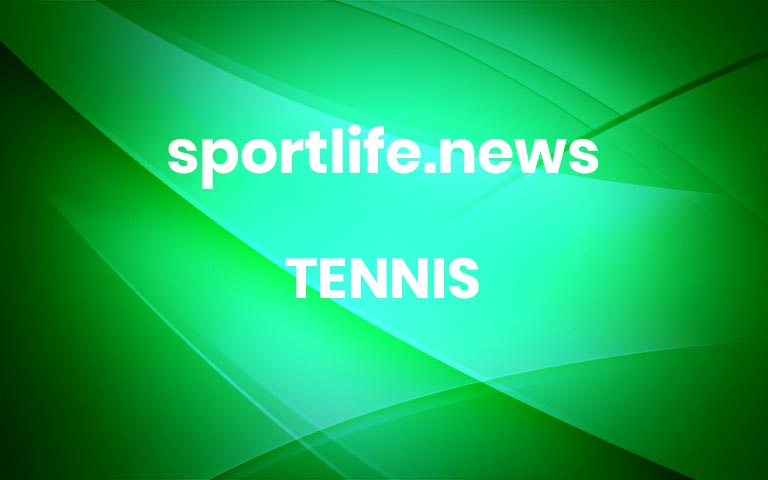SAN DIEGO — The official name of the facility is the Barnes Tennis Center, but once through the front doors, it quickly becomes apparent that it might want to consider expanding its branding.“What are you playing today?” a receptionist at the front desk asked of a father and his adult daughter dressed in what could pass for traditional tennis clothes.“Pickleball,” answered the daughter.“Have you tried padel yet?” asked the receptionist.“No, but it’s on the list,” she said. “I hear it’s addictive.”Such conversations and choices, which have been standard in other parts of the world for several years, remain rare in the United States. But they will become more common soon. The Barnes Center, with its menu of racket-sport offerings, looks like a template for the future as private clubs and public facilities strive to be more things to more people, protecting themselves economically from shifting tastes while trying to defuse some of the rising tension between the grand old game of tennis and fast-growing newcomers like pickleball.“I have a good friend who calls this the Disneyland of racket sports,” said Ryan Redondo, chief executive and general manager of the Barnes Center.The coronavirus pandemic, by increasing demand for outdoor activities, gave some racket sports a boost. But that unexpected surge seems to have staying power, which is giving some in the industry hope.The new arrival is padel, a fast-paced hybrid of tennis and squash contested on a glass-walled court that already has an estimated 20 million players worldwide.Sandy Huffaker for The New York Times“People get fearful, but I do think overall, we will find that this is good for the industry and will lift all racket sports,” said Joe Dudy, president and chief executive of Wilson Sporting Goods. “I’m not saying people won’t be worried, but I don’t think they should be. There was a big battle between tennis and pickle when pickle started the growth momentum, and there are more tennis players now than when that momentum started.”Tennis participation has indeed continued to grow in the United States after years of stagnation and was up to 23.6 million players over the age of 6 in 2022, according to a report by the Sports & Fitness Industry Association. Pickleball, once a regional oddity with a quirky name, is booming and not just among the gray-haired set as it continues to expand its reach into schools. It had 8.9 million players in 2022 according to the organization — way up from 4.8 million in 2021 — with other studies showing significantly higher numbers.The new arrival is padel, a fast-paced hybrid of tennis and squash contested on a glass-walled court that already has an estimated 20 million players worldwide, according to figures provided by Wilson.Developed in the late 1960s and early ’70s in Mexico, padel has much in common with platform tennis, which was invented in Scarsdale, N.Y., in 1928. Both use perforated paddles and are generally doubles games, but platform tennis is primarily a cold-weather game played on a gritty, elevated surface that can be heated from below to melt snow and ice.Jacob Langston for The New York TimesPickleball, once a regional oddity with a quirky name, is booming, and not just among the gray-haired set.Sandy Huffaker for The New York TimesPadel first became popular in Spain and Argentina and is now growing quickly in other parts of Europe, including traditional tennis strongholds like France, Italy and Britain.Though there are only about 200 padel courts in the United States — most of them in private residences — the sport has begun to attract significant investment, and the pace of court construction has accelerated with facilities opening in Florida, California and the New York area. Redondo projects that there could be as many as 40,000 courts in the country in 10 years.“It’s a rackets world,” said Dan Santorum, chief executive of the Professional Tennis Registry, which certifies teaching professionals, who are increasingly seeking certification in multiple racket sports. “A lot of the search firms are looking for triple threats when they are looking for teaching pros for clubs. It’s no longer just a director of tennis. It’s a director of rackets.“I think what’s going to happen is the triple threat in the North is going to be tennis, pickleball and platform tennis, and in the South, it’s going to be tennis, pickleball and padel, although you will see some indoor padel as well in the North.”Both padel and platform tennis use perforated paddles and are generally doubles games played in spaces considerably smaller than tennis courts.Sandy Huffaker for The New York TimesSome major projects are in the works: none bigger than Swing Racquet + Paddle in Raleigh, N.C., which is set to build 28 tennis courts, 25 pickleball courts, 16 padel courts and three beach tennis courts on a 45-acre plot of land with a 100-year lease from the city. Swing has signed deals with Wilson and Sweden’s Good to Great Tennis Academy, which will provide instruction on the Swing campus and whose leadership includes Magnus Norman, a former No. 2 in the ATP rankings who has coached leading players Robin Soderling and Stan Wawrinka.Rob Autry, Swing’s founder and chief executive, said ground has been broken on the campus, which is set to open to the public next year to a projected one million visitors annually for tournaments and other events, including concerts.“The idea is to bring in all these racket and paddle sports under one roof and really democratize all these sports and lean into their differences and their own cultures and give them their own little neighborhood,” Autry said in a telephone interview.If it works, the plan is to open more modest multisport Swing facilities in other locations, primarily in the Sun Belt to start.In the meantime, the Barnes Center is running on 16 acres in San Diego. A public facility, it is still tennis-centric with 25 courts and is a hub for juniors. Last year it was the site of an ATP 250 tournament and a WTA 500 event that attracted a top-tier field.“I have a good friend who calls this the Disneyland of racket sports,” said Ryan Redondo, chief executive and general manager of the Barnes Center.Sandy Huffaker for The New York TimesBut the center also has four new lighted pickleball courts and seven new padel courts built on the edge of the property that was not suitable for tennis courts.That is a best-case scenario at a moment when tensions elsewhere over the use of available space continue to rise between tennis and pickleball players. Similar turf battles have been waged in Spain in urban areas between tennis and padel. Though pickleball and tennis can coexist on the same courts with blended lines, that often leaves both communities dissatisfied. But the alternative, for tennis, often means losing ground, particularly when clubs can fit four pickleball courts on one tennis court and often generate more revenue.The United States Tennis Association, under its former executive director, Gordon Smith, showed no interest in an entente cordiale.“Back when Gordon was there, pickleball was Satan,” said Stu Upson, the outgoing chief executive of USA Pickleball, in a 2021 interview.Smith said he had only one issue with pickleball. “Losing real estate,” he said. “If someone wants to build pickleball courts, great, but if someone has four tennis courts and wants to make them into pickleball courts, that’s different.”Since Smith’s 12-year tenure ended in late 2019, the U.S.T.A. has softened its approach, building bridges with USA Pickleball and, more symbolically, building eight pickleball courts and four padel courts at its sprawling national campus in Orlando, Fla.Jacob Langston for The New York TimesJacob Langston for The New York Times“The pressures that tennis facilities are under to be able to diversify their offerings to generate more revenue are, I think, very real,” said Craig Morris, the U.S.T.A.’s chief executive for community tennis.Morris, like Autry, is convinced that this is not a zero-sum game: that one racket sport can lead to another as long as there is ample court space available for all the options. But Morris said the U.S.T.A. was involved in research on skill acquisition with Michigan State University to see if pickleball or padel, with their shorter swing arcs, were effective pathways to tennis.Redondo, a former all-American tennis player at San Diego State who now plays much more padel than tennis, is seeing crossover and is also invested in padel as a part owner of the San Diego Stingrays, a franchise in the new Pro Padel League set to start play this month.“Our padel players are often on the tennis courts right before or right after they play padel, so there’s a really good mix and synergy there,” he said. “My belief is that pickleball and padel will start doing that as well and then you will start to have this circulation of these racket sports that can thrive together without taking tennis courts away.”To test out the vision, Redondo and I played all three sports in 90 minutes last month: starting with padel, continuing with pickleball and finishing with tennis, by far the best suited to singles.Tennis participation has continued to grow after years of stagnation and was up to 23.6 million players over the age of 6 in 2022.Sandy Huffaker for The New York TimesThe sounds are distinct:from the high pitch of a lightweight paddle meeting a plastic whiffle ball in pickleball to the percussive pop of a denser paddle meeting a decompressed tennis ball in padel to the more familiar thwock of strings driving a ball in tennis.The swing lengths, like the court lengths, vary. A tennis swing is more rotational: loading the legs and then turning the hips with the shoulders following. Padel is routinely more acrobatic, with 360-degree turns and the need to adjust to the different spins off the glass. Pickleball feels more static with compact swings but also more manic at times with its abrupt changes of pace that demand both deft, considered touches and fast-twitch reactions near the net.“But the contact point, the pure sweet spot, felt pretty much the same in all three sports,” Redondo said.Tennis, the oldest of the three, does have one major element the others do not allow: an overhead serve. I finished our 90-minute tour with an ace, which was more down to Redondo being a good host than to my power and precision but, in a world of racket-sports change, felt reassuring just the same. More



